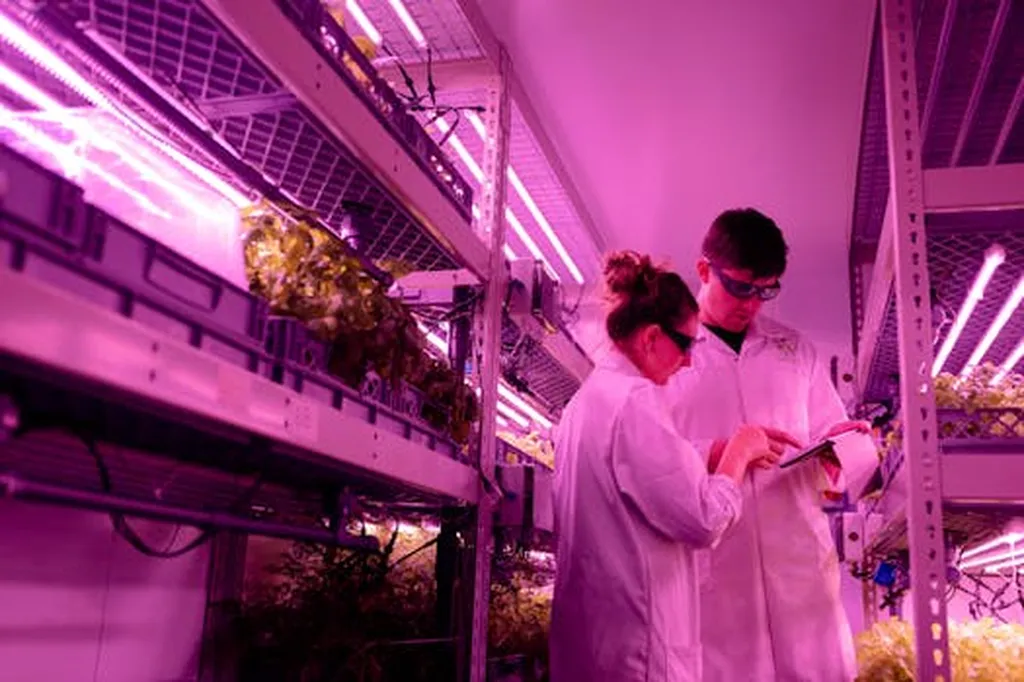In the rapidly evolving world of precision agriculture, Unmanned Aerial Vehicles (UAVs) are taking center stage, offering farmers and agronomists a powerful tool to monitor crop health with unprecedented detail. A recent review published in the journal *Plants* (translated to English as “Plants”) sheds light on the latest advancements in UAV-based remote sensing for tracking crop water and nutrient status, providing a roadmap for future innovations in this burgeoning field.
Led by Xiaofei Yang from the College of Water Resources and Architectural Engineering at Northwest A&F University in China, the review delves into the intricacies of UAV technology, highlighting its flexibility, fine spatial resolution, and rapid data acquisition capabilities. These features make UAVs an invaluable asset for precision agriculture, enabling farmers to make data-driven decisions that can significantly enhance crop yields and resource efficiency.
“UAV-based remote sensing has revolutionized the way we monitor crop water and nutrient status,” says Yang. “The high spatial resolution and rapid data acquisition capabilities allow us to detect subtle changes in crop health that were previously overlooked.”
The review explores various UAV platforms and sensor configurations, emphasizing their suitability for different agricultural applications. It also outlines critical data processing steps, such as radiometric correction, image stitching, segmentation, and data fusion, which are essential for accurate monitoring. Three major modeling approaches for parameter inversion—vegetation index-based, data-driven, and physically based methods—are compared, providing a comprehensive overview of the current technological landscape.
One of the key challenges highlighted in the review is the labor-intensive nature of data processing chains and the limited scalability of existing models. Despite these hurdles, the potential for UAV-based remote sensing in precision agriculture is immense. The review suggests that future advancements could include the integration of edge intelligence, hybrid physical–data modeling, and multi-source, three-dimensional collaborative sensing.
“While there are challenges to overcome, the potential benefits for the agricultural sector are substantial,” Yang notes. “By leveraging UAV technology, we can optimize resource use, improve crop yields, and ultimately contribute to food security.”
The commercial impacts of this research extend beyond the agricultural sector, reaching into the energy sector as well. Efficient water and nutrient management in agriculture can lead to significant energy savings, as reduced water usage translates to lower energy consumption for irrigation. Additionally, improved crop health and yields can enhance the sustainability of bioenergy crops, providing a renewable energy source that is both environmentally friendly and economically viable.
As the agricultural industry continues to embrace precision farming techniques, the role of UAV-based remote sensing is set to become increasingly pivotal. The insights provided by this review not only advance our understanding of current technologies but also pave the way for future innovations that could transform the way we cultivate crops and manage agricultural resources.
In the words of Yang, “The future of precision agriculture lies in our ability to integrate advanced technologies and data-driven approaches. UAV-based remote sensing is a key player in this evolution, offering a glimpse into a more sustainable and efficient agricultural future.”
With the findings published in *Plants*, the stage is set for further research and development in this exciting field, promising a future where technology and agriculture converge to create a more sustainable and productive world.

